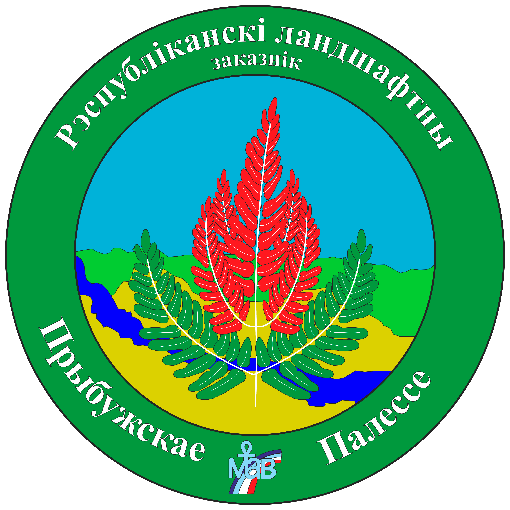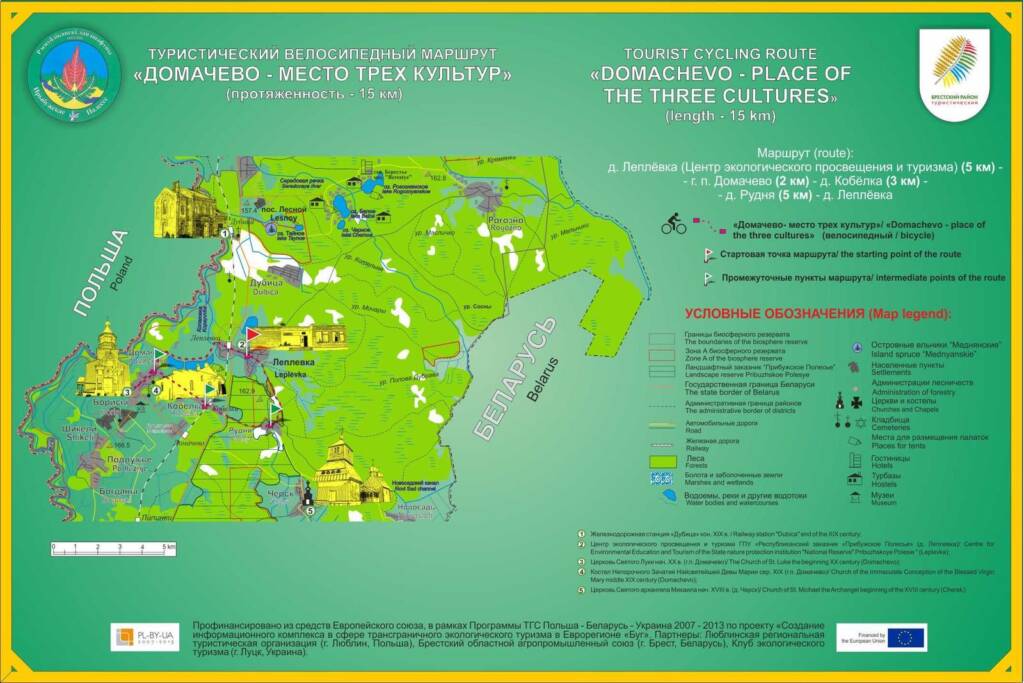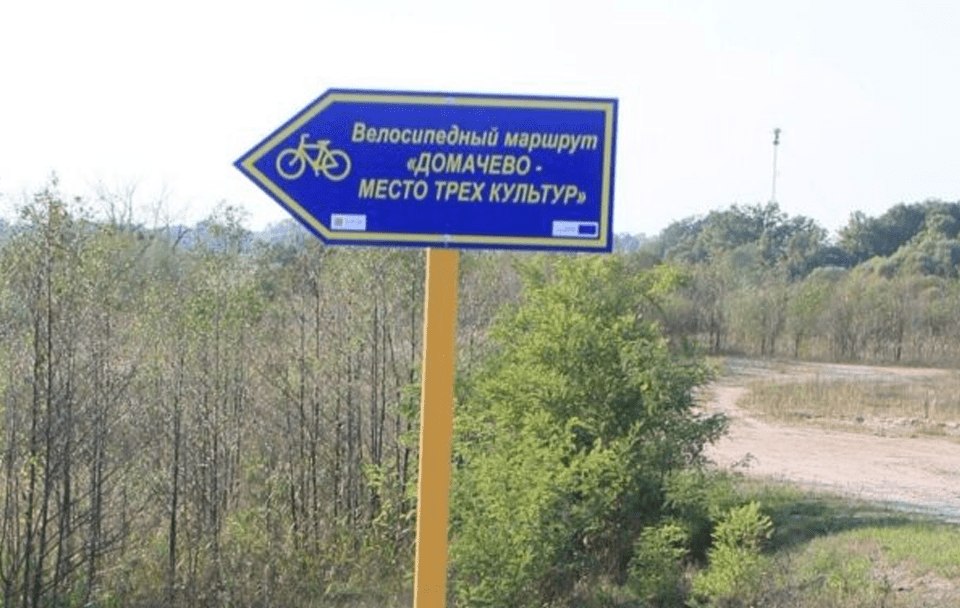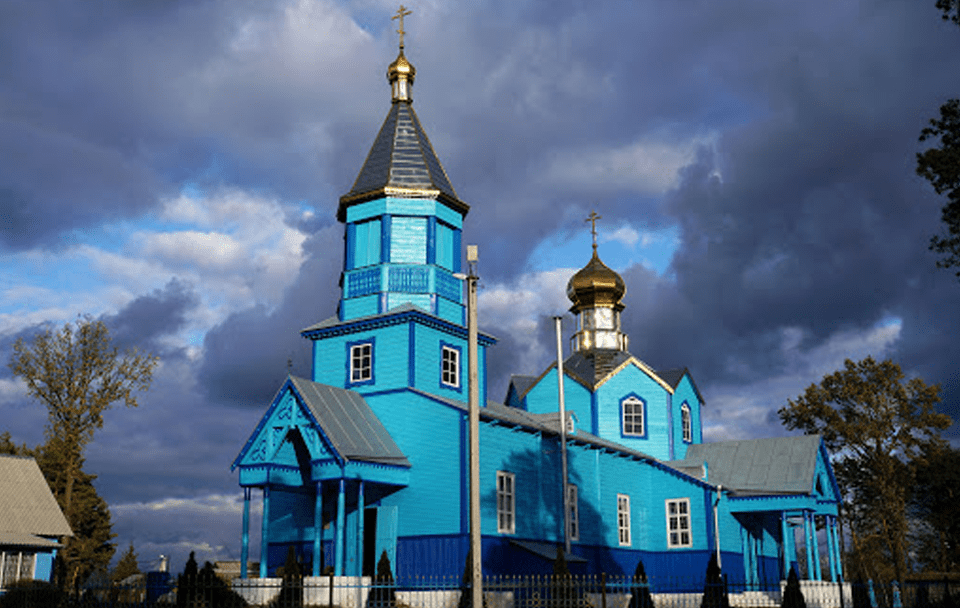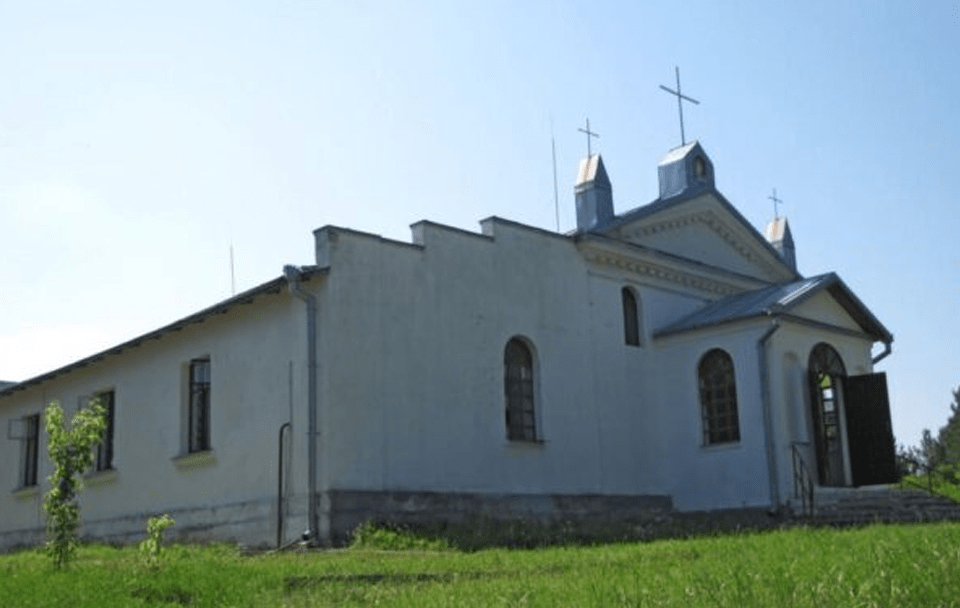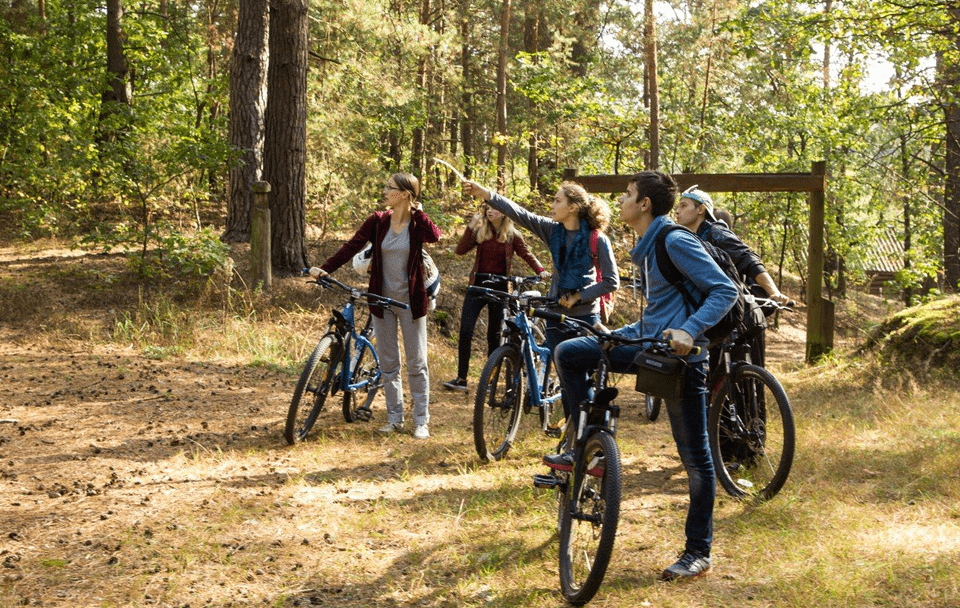Cycling route signs – an arrow on a blue background with the inscription “Bicycle route“ Domachevo – a place of three cultures ”.
This cycle route starts at the stand at the Center for Environmental Education and Tourism in the village of Leplevka. At the stand you can study the route map and the location of interesting objects that will be encountered along the way.
From the eco-center we drive along a gravel road, cross the P94 asphalt road, then cross the railway crossing. Following the signs, we leave the settlement onto an asphalt road leading to the urban-type settlement Domachevo. On the way, on the left side, we pass fish ponds, which all year round attract a large number of waterfowl, among which you can often find rare and protected species.
After the ponds, the road leads to the road border checkpoint “Domachevo” (Belarus) – “Slovatychi” (Poland).
We turn, as indicated by the arrow of the cycle route, to the left and enter Domachevo. The settlement has a long and rich history. There are three theories about where the name of the village came from. The first says: the name comes from the surname (Domash, Domashevich) or, more likely, from the name (Domash, Tomash). The second theory suggests that perhaps – from the local name of the dress or skirt “homespun”. The third – from the local pronunciation of the German “Dolmetscher” (“dolmecher” – “tlumach” – “domachev”), which means only “translator”.
The village has preserved the Church of St. Luke (1905) – a monument of wooden architecture.
There is also a functioning church in Domachevo – the Immaculate Conception of the Most Holy Virgin Mary (1854). Near the church there is a memorial sign in honor of the killed insurgents of the K. Kalinovsky uprising of 1863-1864.
Near Domachevo, in the floodplain of the Western Bug, from the middle of the 16th century, one of the first Protestant communities arose (1564). The settlers were from Holland. Thanks to the mentality, dogmas of faith and innate industriousness, the colonies quickly turned into prosperous farms of Neubrow and Neudorf. The locals adapted the difficult-sounding words, and the inhabitants of the colony began to be called simply – golendrs. Monuments at the Lutheran cemetery (the outskirts of the village), as well as the foundations of the church and some outbuildings, have survived to this day.
Our route passes by the church and continues along a dirt road leading through a mixed forest to the village of Kobelka. At the exit from Domachevo there is an indicator of the cycling route, which will not let you go astray. Passing through Kobelka, we carefully look around – elements of a typical Polissya settlement have been preserved in the village. So in one of the courtyards there is a residential building, combined with a barn.
After passing through the railway crossing, we leave the village and again cross the P94 highway. In accordance with the direction on the sign of the cycling route, we move in the direction of the village of Rudnya. Behind the store building in Rudna, at the beginning of the forest, there is an entrance to the Lesnaya Rechka ecological trail. The eco-trail is about 3 kilometers long and runs through a pine and mixed forest from the village of Rudnya to Leplevka along the Kopayuvka river bed. It is better to move along the eco-trail on foot.
Leplevka can also be reached by driving through Rudnya and leaving the village in the direction indicated by the arrow on the cycle route. After driving along a dirt road surrounded by fields on one side and a forest on the other, we reach Leplevka and in the village we arrive at the starting point of our route.
